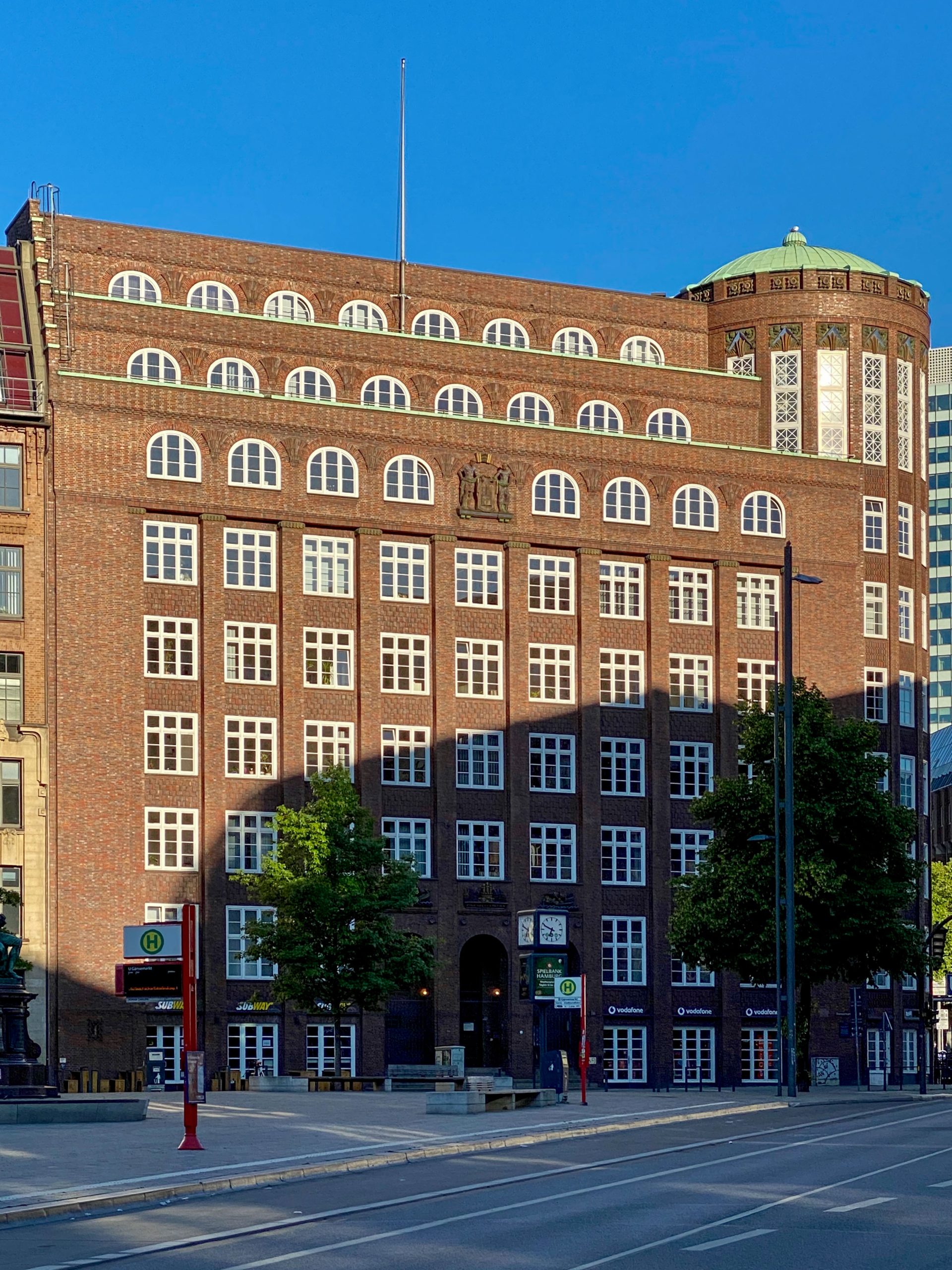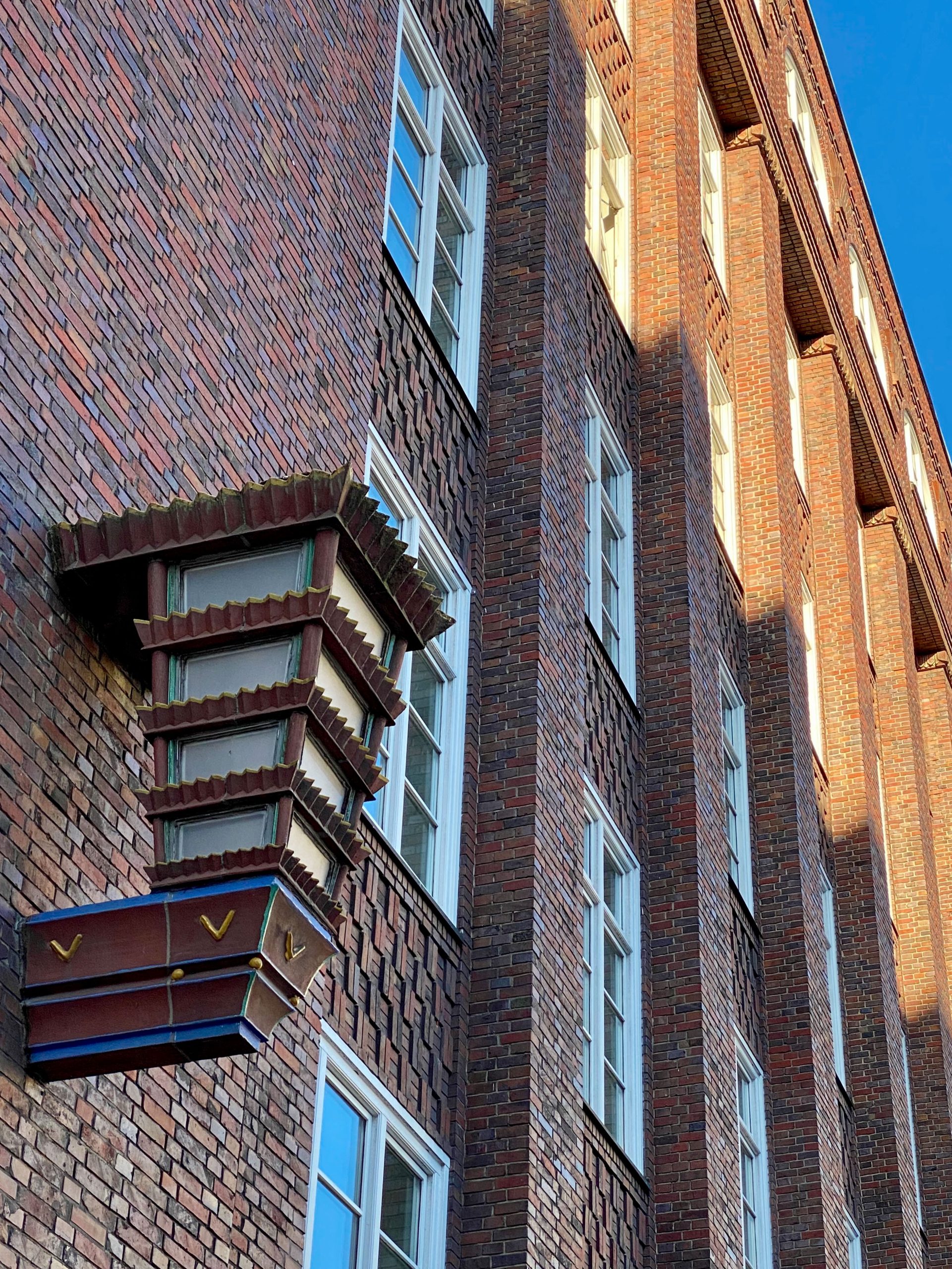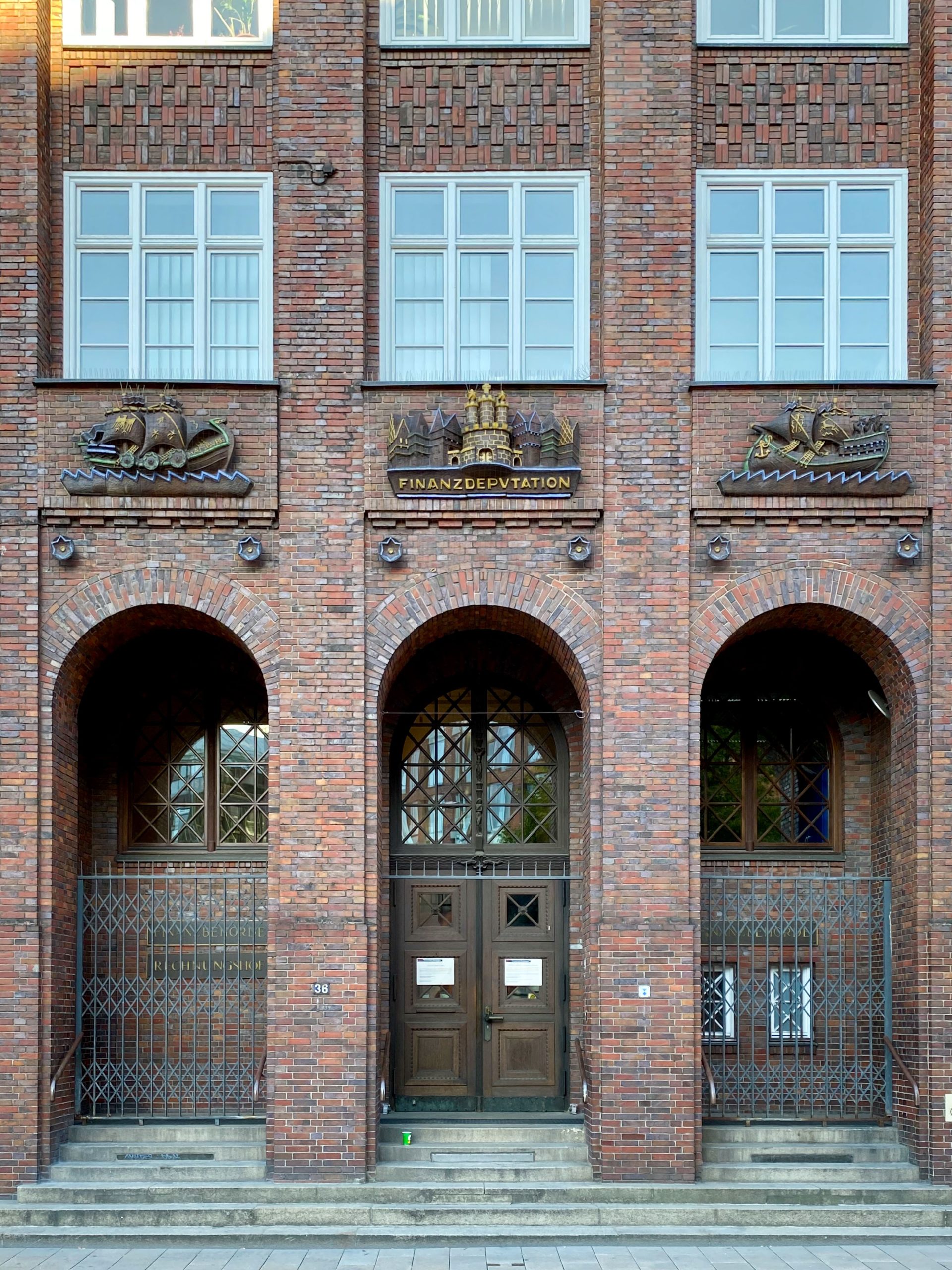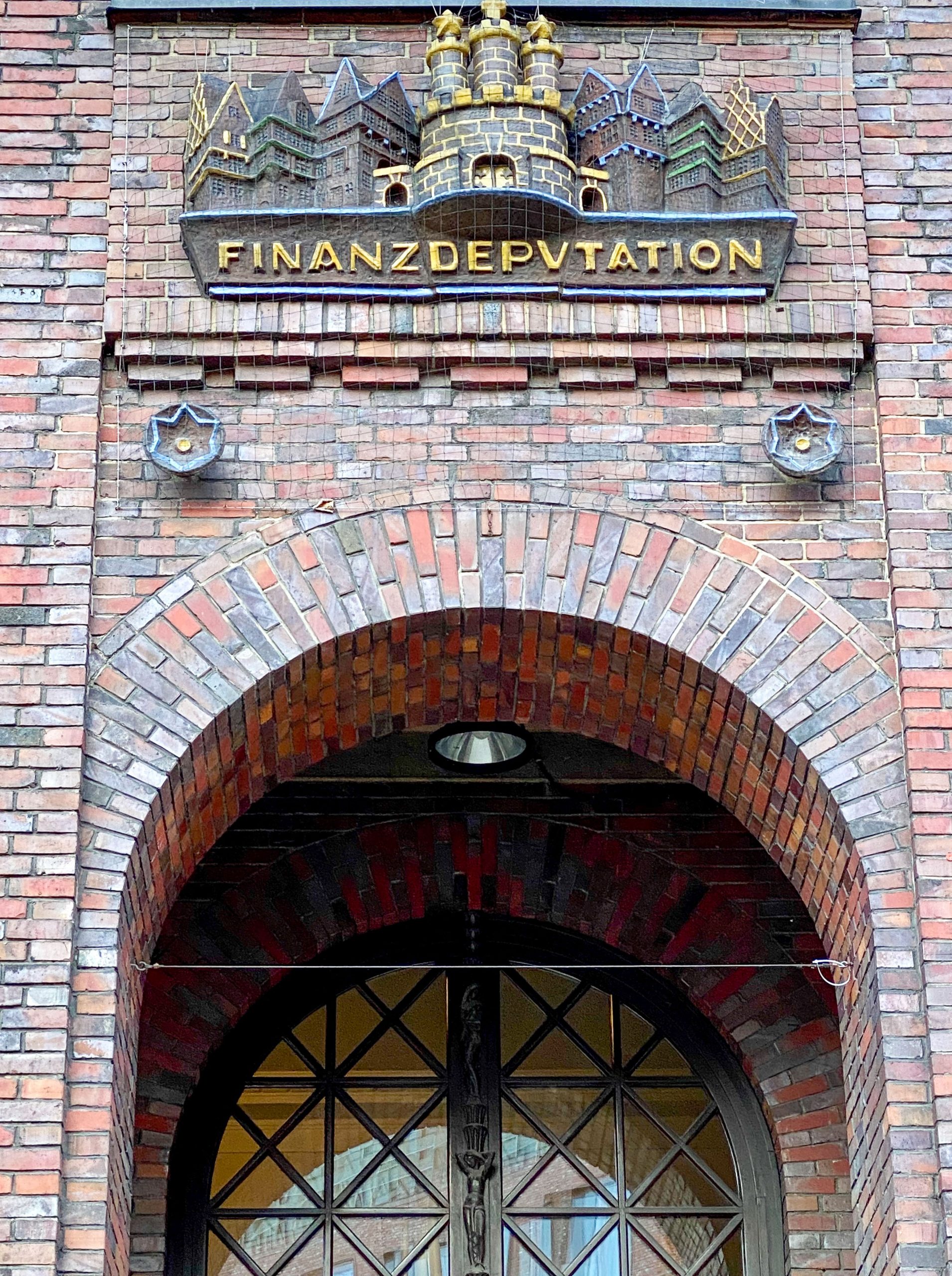1919 – 1926
Architect: Fritz Schumacher
Am Gänsemarkt 36, Hamburg. Germany
The Finance Authority’s office building on Gänsemarkt in Hamburg, with an area of 21,000 square meters, was completed between 1919 and 1926 according to designs by chief building director Fritz Schumacher. It is listed as a historical monument.

Finance Authority Building, 1919-1926. Architect: Fritz Schumacher. Photo: Daniela Christmann

Finance Authority Building, 1919-1926. Architect: Fritz Schumacher. Photo: Daniela Christmann

Finance Authority Building, 1919-1926. Architect: Fritz Schumacher. Photo: Daniela Christmann
Finance Deputation and Hamburg Finance Authority
The Finance Authority (formerly the Finance Deputation) is one of the oldest authorities in Hamburg, with a history dating back to the Middle Ages.
In 1860, the former Kämmerei (treasury) was transformed into the Finanzdeputation (finance deputation), which subsequently gradually took over the tasks of the other deputations, most recently in 1920 also those of the Steuer-Deputation (tax deputation) and the Deputation für indirekte Steuern und Abgaben (deputation for indirect taxes and duties).
During the National Socialist era, the Finance Deputation was renamed several times to “Hamburg Finance Administration”, “Hamburg Finance Authority” and finally again to “Treasury”.
After the end of the war, the name was finally changed to Finanzbehörde (Finance Authority) in 1947.
The Kämmerei was originally located in the old city hall on Trostbrücke.
After this building fell victim to the Great City Fire in 1842, the treasury was temporarily housed in the former orphanage in Admiralitätstrasse before it was able to move into the newly built Hamburg City Hall in 1897.

Finance Authority Building, 1919-1926. Architect: Fritz Schumacher. Photo: Daniela Christmann

Finance Authority Building, 1919-1926. Architect: Fritz Schumacher. Photo: Daniela Christmann
Office Building at Gänsemarkt
Since 1926, the authority has been located in its current office building on Gänsemarkt, which was built by Fritz Schumacher.
The irregular four-wing reinforced concrete skeleton building, faced with clinker bricks, encloses an inner courtyard.
It has six regular floors and two staggered floors.
Pilasters and rectangular mullioned windows divide the facade. The sixth, slightly projecting floor and the staggered floors have round-arched windows.
A corner tower separates the wing facing Gänsemarkt from the one on Valentinskamp. In the lower area, it is integrated into the building; in the area of the staggered floors, it protrudes cylindrically from the structure.
Each of the entrances on Gänsemarkt and Valentinskamp is emphasized by three high round arches that extend over two stories.
Richard Kuöhl
Colored terracotta figures decorate the facades. These are designs by sculptor Richard Kuöhl, who also created the ceramic cladding and the fountain in the entrance hall.

Entrance hall. Ceramics: Richard Kuöhl. Photo: Uwe Barghaan, 2015

Finance Authority Building, 1919-1926. Architect: Fritz Schumacher. Photo: Daniela Christmann

Finance Authority Building, 1919-1926. Architect: Fritz Schumacher. Photo: Daniela Christmann
Construction History
Once the previous building had been demolished, excavation of the building pit began in December 1919. The earthworks were completed in April of the following year, after which construction lay idle for two years.
It was not until April 1923 that work began on the foundations.
The basement was completed in March 1924, and it was not until two and a half years later, in December 1926, that the finished building could be handed over.
This exceptionally long construction period can be explained by the financial bottlenecks in the years following the First World War and the hyperinflation in 1923.

Finance Authority Building, 1919-1926. Architect: Fritz Schumacher. Photo: Daniela Christmann

Finance Authority Building, 1919-1926. Architect: Fritz Schumacher. Photo: Daniela Christmann

Finance Authority Building, 1919-1926. Architect: Fritz Schumacher. Photo: Daniela Christmann

Finance Authority Building, 1919-1926. Architect: Fritz Schumacher. Photo: Daniela Christmann
Reconstruction and Restoration
In 1944, large parts of the upper floor on Valentinskamp were destroyed, but were rebuilt true to the original after the war.
Between 1988 and 1990, the windows were renewed in accordance with the original.
From 1998 to 2001, further renovation work was carried out in keeping with the preservation order.
Sale and Reacquisition of the Building
In 2006, the building was sold by the city of Hamburg to a real estate fund.
The city repurchased the building in 2023.
The building is to be renovated by one of the city’s real estate companies as the new owner in accordance with the requirements for a listed building and under energy aspects, and then leased to the authorities.

 Finanzbehörde, 1919-1926. Architekt: Fritz Schumacher. Foto: Daniela Christmann
Finanzbehörde, 1919-1926. Architekt: Fritz Schumacher. Foto: Daniela Christmann